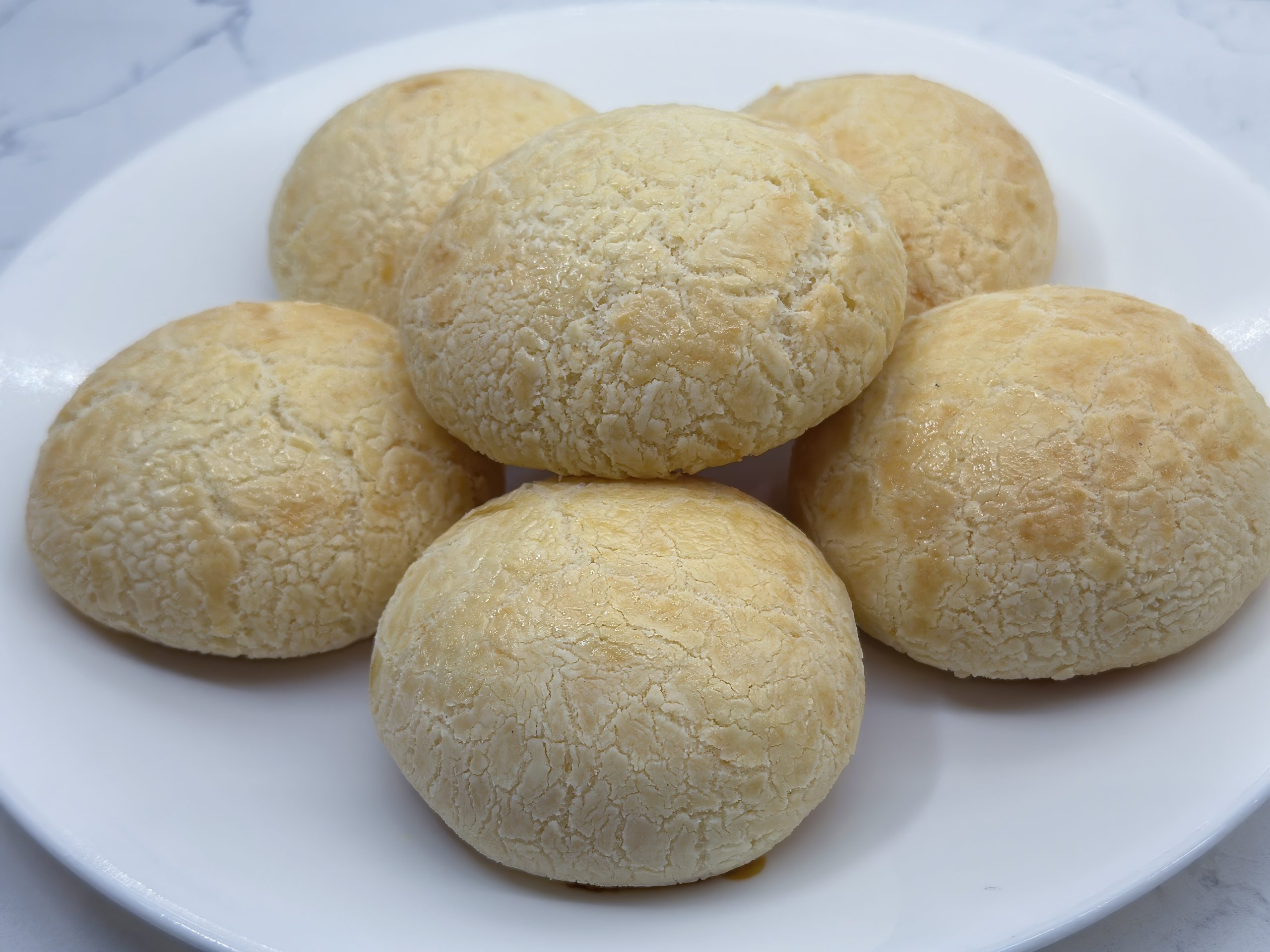
Worldwide Food Tour – Brazil
Pão de queijo, or Brazilian cheese bread, is a delightful small, round bread roll that’s remarkably crispy on the outside and wonderfully chewy and soft on the inside. What makes it particularly special is that it’s naturally gluten-free, made with tapioca flour (also called manioc or cassava flour) instead of wheat flour.
The bread gets its distinctive taste and texture from the combination of tapioca flour, eggs, milk, oil, and generous amounts of cheese – traditionally Minas cheese, though parmesan is commonly used today. When baked, the tapioca flour creates a uniquely chewy, slightly elastic texture that’s quite different from traditional wheat breads.
The history of pão de queijo dates back to Brazil’s colonial period in the 18th century. It originated in the state of Minas Gerais, where African enslaved people working in the mines would sift cassava root to make tapioca flour. Initially, the rolls were made simply with tapioca flour and water. As dairy became more available in the region, cheese was incorporated into the recipe, creating the beloved snack we know today.
Today, pão de queijo is enjoyed throughout Brazil and beyond, particularly for breakfast or as an afternoon snack with coffee. It’s sold everywhere from corner bakeries to coffee shops, and many Brazilians make it at home. The rolls are best enjoyed warm, right out of the oven, when the cheese is still gooey and the exterior is at its crispiest. Their popularity has grown internationally, particularly as awareness of gluten-free diets has increased.
Yummy.